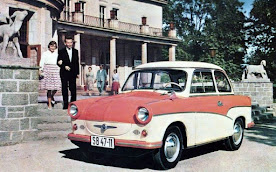Belvedere (pronounced bel-vi-deer or bel-ve-de-re (Italian))
(1) In
architecture, a building, or an (often turret-like) feature of a building,
designed and situated to look out upon a pleasing scene.
(2) A
cigar, shorter and with thinner ends than a corona.
(3) A
palace in Vatican City, Rome, now housing an art gallery.
(4) As
Fort Belvedere (formerly Shrubs Hill Tower), a country house in Surrey,
England, famously the site of the abdication of King Edward VIII in 1936.
(5) A
widely used name for localities and structures.
Adopted in English in the sense of a “raised turret or open story atop a house” from the Italian belvedere (literally “a fair (ie beautiful) sight”), the construct being bel(lo) (beautiful), from the Latin bellus (beautiful, fair) + vidēre (to see; a view, sight), from the primitive Indo-European root weid- (to see). The pronunciation is thought to have been influenced by the French form of the word. The perhaps opportunistic but enduring noun gazebo is said by some to be a facetious formation, the construct being gaz(e) (from the Middle English gasen; akin to the Swedish dialectal gasa and Gothic usgasjan (to terrify) which English gained in the sense of "to stare intently or earnestly") + -ebo (the Latin first person singular future tense suffix, on the model of belvedere. That’s an attractive etymology but the Oxford English Dictionary dismisses the theory, saying it’s a corruption of a word from the orient, possibly the Arabic قَصَبَة (qaṣaba) (source of the familiar casbah). Belvedere is a noun; the noun plural is belvederes.
In architecture, the word "tower" is used loosely but technically a tower should rise from ground-level to its conclusion whereas a turret begins part-way up a building, most commonly at a corner. Historically a turret was something on a small scale (relative to the building on which it sat) and usually little more than ornamental (although for centuries many were part of the defensive system of a fort or castle, both as an observation and fire-point) while a belvedere's sole purpose should be to offer a commanding view of some pleasant vista.
Belvédère du Rayon Vert, Cerbère, France
Closed
in 1983, the art deco Belvédère du Rayon
Vert is a former hotel in Cerbère, France, built between 1928 and
1932. What was known as “ocean liner”
style was at the time popular in interior decorating but, taking advantage of
the shape of the available land, the architect Léon Baille (1828-1932) extended
the nautical idea to the whole building which follows the lines of a ship and borrowing
further from the decks of ocean liners, a tennis court sat on the roof. One of the nation’s protected historic
monuments, some of the rooms have been restored as apartments and tours are
conducted during the holiday season.
The Plymouth Belvedere
The use
of the Belvedere name by the Chrysler’s corporation low-priced (and now
defunct) Plymouth brand is illustrative of the practice of the US industry
in the mid-late twentieth century to create a prestige model which gradually
would be moved down the hierarchy as other names were introduced at the top of
the range. The Belvedere nameplate also
shifted between market segments, moving from the full-sized to the intermediate
platform as Detroit’s offerings began to proliferate as the public (sometimes an economic impreative) began to prefer smaller cars.
1951 Cranbrook (left), 1951 Cranbrook Belvedere (centre) and 1956 Belvedere (right).
Plymouth
introduced the Belvedere name in 1951 for the new, two-door hardtop version of Cranbrook
line, Plymouth’s first model with the style which would for a quarter-century be a signature of Detroit’s more expensive cars. In 1954, the name ceased to be an option and the Belvedere
supplanted the as Cranbrook as the top-of-the-range model, offered now in all available
body-styles (sedans, hardtops, station wagons, and convertibles) in a mix of two and four-door
configurations. The 1951 line looks
frumpy now and even then was considered bulbous compared with the more
modernist lines coming from the Ford and General Motors (GM) design studios but Chrysler at the
time was run by a chief executive who dictated their products had to be able to
driven “by a man wearing his hat”. That
view was abandoned for the 1955 models and the refinements which followed the
next year were emblematic of the longer-lower-wider dictum which would for a generation dominate the industry.
1957 (left), 1960 (centre) and 1961 (right) Belvederes.
The 1957-1960
Belvederes are among the best remembered from Detroit’s crazy macropterous years,
and are related to the final iteration on the 1961 Imperial which featured the
tallest fins of the era although it’s the extravagance of the 1959 Cadillac
which is most famous. The 1957
Plymouths, released with the advertising slogan “Suddenly it’s 1960” created a sensation but unfortunately,
although immediately popular, the quality control was patchy (like some of the
paintwork) and Chrysler's reputation would for years suffer. The styling lasted until 1961 by which time the
craze was over and the big fins looked dated but the replacement was truly bizarre. Sales suffered but so low is the survival
rate of the 1961 Belvederes their very scalloped weirdness has made them a
collectable.
1962 (left), 1963 (centre) and 1964 (right) Plymouth Belvederes.
Acting on misunderstood rumors (which some insist was industrial espionage) about what the competition was doing with their full-sized lines, Plymouth "downsized" the Belvedere for 1962, something which in little more than a decade would make sense but it was out of tune with the early 1960s. That was a shame because the engineering of the cars was solid and many of those who did buy the things expressed satisfaction with the reduced exterior dimensions, noting there was little loss in interior space and those who definitely found an advantage in the lower weight and more agile handling were drivers using Belvederes in competition, the cars successful on both circuits and drag strips. The styling however was again unfortunate and was soon toned-down; it didn’t become quite as bland as the 1964 Chevrolet (a reaction to the excesses of their 1959-1960 “bat-wings”) which was described as “looking a little like every car ever built” but it was certainly inoffensive.
1966 Belvedere (left), 1969 Hemi Roadrunner (centre-left), 1970 Superbird (centre-right) and 1970 Superbird in NASCAR trim (right)
With
the restoration of a full-sized model to the range in 1965, the Belvedere was
maintained in the increasingly important intermediate sector (similar in to
dimensions to what the full-size cars had been before they became bloated in
the mid-late 1950s). A new trim package
called the Satellite was added (a la what the original Belvedere had in 1951 been
to the Cranbrook) and, responding to the increased demand for muscle cars, the high-performance
GTX was created. The line was restyled
in 1968 using an interpretation of the then popular “coke-bottle” look and it
was on this platform that the Roadrunner was built. The Roadrunner essentially combined a stripped-down,
basic Belvedere with the high performance engines and, stripped of any luxury
fittings, it was cheaper as well as lighter. Able to be configured to outperform even the GTX and offered at a price which on any cost/performance analysis was a bargain, it was an immediate hit and the line soon proliferated, Roadrunner convertibles
and additional engines soon offered. The Belvedere's final fling was also its apotheosis, the be-winged Roadrunner Superbird, offered only in the 1970 model-year as a homologation exercise to qualify the aerodynamic
improvements for use in competition. That
year however marked the swansong of the Belvedere name, Satellite preferred
as it was more in accord with the space age.
Miss Belvedere as now displayed (left), being lowered into her capsule in 1957 (centre) and as exhumed in 2007 (right).
The 1957 Belvedere was used in one of the larger and more unusual time-capsules. Named Miss Belvedere as part of the city of Tulsa's “Tulsarama” Golden Jubilee Week festivities celebrating Oklahoma's fiftieth year of statehood, the car was on 15 June 1957 sealed in an underground vault to be opened a half-century later. Intended as a prize to whomever came closest to guessing Tulsa's population in 2007, cognizant of the fears of nuclear war prevalent at the time, the enclosure was built to withstand hydrogen bombs being detonated in the vicinity. Unfortunately, less attention was given to making things watertight and, when opened in 2007, the Miss Belvedere was found to have spent much of her fifty years wholly or partially submerged, the result a muddy and rusty mess. Some attempts were made to clean the worst of the damage in the hope a restoration might be possible but ultimately it was determined it was beyond salvation and she's now displayed as a dilapidated relic of a troubled yet optimistic age.
Camelot Inn & Suites: In 1977 (while Ramada Camelot Inn) and circa 2022 (right). While externally (and perhaps internally based on the period-themed furnishings shown on the website) little changed apart from the color-scheme (curiously, it now looks "more 1970s" than it did in the era), windows have been added to the belvedere and while that may have been done for any number of reasons, fire regulations may have required the change.
As early as the 1970s, south of the Mason-Dixon Line, belvederes and other architectural features recalling medieval castles became popular not only on what would come to be called McMansions but also on commercial buildings and the Camelot Inn in Amarillo, Texas was one of three (the others in Tulsa, Oklahoma, and Little Rock, Arkansas), which were part of a “small chain”. The term “small chain” was never really defined but generally applied to groups of hotels or motels (not necessarily with a common ownership” which operated over more several states under a shared identity. In this they were different from the national or international “big chains” such as Four Seasons (1961) or Holiday Inn (1952). The small chain model inherently was fragile and fell from favour as booking systems became increasingly inter-linked and management of almost all the properties came to be absorbed by the national operations, Ramada and Travelodge especially active in the regional areas. Ramada in 1974 purchased Camelot Inn in Amarillo and re-branded it Ramada Camelot Inn (existing names often retained as an element during those days. That arrangement lasted until 1981 when Best Western assumed control and the property, still with the distinctive belvederes, trades to this day as Camelot Inn & Suites.
McMansions in their natural habitat.
Rightly or wrongly, many object to McMansions (the large, over-styled, essentially mass-produced houses built for the upper middle-class anxious to flaunt their wealth). There is often an objection to conspicuous consumption and an extravagant use of resources but students of architecture focus on the confused mix of motifs which so often litter the structures with as many architectural clichés from palaces or castles as can be crammed into the space with little regard for scale or any sense of integrity. On McMansions, it’s not unusual to see a mix of Corinthian columns, towers, turrets, belvederes, French doors, Gothic arches, flag-poles, stained glass, transom windows, balconies and porticos. Much of the criticism probably is an expression of resentment that people with poor taste are able to afford such things but as a general principle, in architecture an emphasis on proportion and restrained elegance will tend to be more admired.
Fort Belvedere (formerly Shrubs Hill Tower), a country house in Windsor, Surrey, famously the site of the abdication of King Edward VIII in 1936 (left) and Belvedere Palace, Vienna (right).
Lindsay Lohan attending V Magazine, Marc Jacobs & Belvedere Vodka event, Hiro Ballroom, New York City, September 2009.

































